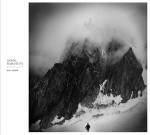LIONEL MARCHETTI: Une Saison (Monotype Records)
By themilkman
Posted on Jul 27th 2011 01:48 am
Filed in Albums | Tags: Lionel Marchetti, Monotype Records
Comments (0)
LIONEL MARCHETTI
Une Saison
MONO036
Monotype Records 2011
06 Tracks. 86mins33secs
![]() Norman Records: CD
Norman Records: CD
Une Saison collects four works from French musique concrète composer Lionel Marchetti composed between 1993 and 2000. While a relatively unknown musician and sound artist, Marchetti has been recording since the beginning of the 1990s, and has been working as part of the Groupe De Recherche Musicales in Paris since 1993. He also organises regular workshops centered on the recorded sound, electro-acoustic music, musique concrète and what he calls the art of the loudspeaker. Beside his work with sound, he also writes poetry and has published a number of essays on musique concrète.
Each of the four pieces presented here makes intensive use of field recordings, upon which Marchetti places layers of atmospheric synthesizer to create extensive sound worlds. Originally commissioned by the GRM, where it was recorded, La Grande Vallée was composed between 1993 and 1996 and released two years later on French imprint Metamkine. Beside Marchetti, the piece also features contribution from Jean Andréo (bass clarinet) and voices from Hélène Bettencourt, Frédéric Malenfer and Bruno Roche. La Grande Vallée is a pretty dense and at times slightly somber composition which appear to document elements of pastoral life, but it is quite difficult to draw a clear image of exactly what is being chronicled here. For most of the piece, we seem to follow an undetermined character on various terrains as they forage through dead leaves or make their way through fields and along country paths. Marchetti arranges textured electronic structures in the backdrop, alternating their placement between fore and back, so they appear at times to define the piece, while at others, they are there solely to accentuate the atmospheric setting created with the field recordings.
Portrait D’un Glacier (Alpes, 2173m) works in a similar way. Due to the particular set up and the extensive use of field recordings involving melting snow, ice and running water, the piece is at times very reminiscent of Biosphere’s Substrata or Polar Sequences, his collaboration with Higher Intelligence Agency. Also a commission for the GRM, and composed between 1998 and 2000, the piece, at almost thirty minutes, the longest here, appears like a snapshot of a glacier’s life, from freezing water and resounding cracks as part of it shifts under its own weight to people walking or skying on its surface and snow slowly melting away. There is a great sense of peace here conveyed through Marchetti’s electronics. Here again, there is a pretty constant shift of focus between field recordings and musical elements, but this is done with great subtlety and happens, for the most part, almost imperceptibly but continuously alters the mood of the piece.
Dans La Montagne (Ki Ken Taï) is much more intense. The piece uses recordings of the French Kendo team in action. Kendo is a Japanese sword-fighting martial art, and from the recordings used here, it is a fairly intense sport. The sword noises provide Marchetti with a vast array of noises which he progressively incorporates in his soundscapes as the screams and shouts of the team members are partly stripped away. The early part of the piece is at times disturbing in its underlying violence and energy, and contrast greatly with the rest of the record, but, while things calm down slightly in the second half, the mood remains quite oppressive as Marchetti layers quite discomforting dissonant sounds around the remaining combat noises.
L’Œil Retourné is a much more minimal composition, originally created at CFMI at Lyon University, and sits in the great tradition of musique concrète of the fifties and sixties in the way it makes extensive use of radio interferences and uses the human voice, once again provided by Hélène Bettencourt, in a purely sound aspect. The first half is almost entirely dedicated to extremely sparse radio textures, distortions and hisses, over which Bettencourt adds tiny little screams. At times, this fragile set up is completely crushed as more substantial radio signals come into focus for a moment, but there is very little sustained components other that the rarefied ones mentioned above. This changes in the second half as Marchetti introduces long atmospheric drones which he uses to create a very different sonic spaces. Voices cross the spectrum, but always at a distance and in a deeply processed state, while other noises are placed much more in focus. The tone remains extremely minimal until the end, and nothing is ever revealed of the actual sound sources used.
While these compositions were created over a period of a few years and are not connected in any way, their gathering together here is totally relevant and gives a glimpse into Lionel Marchetti’s work and approach. These pieces are often mysterious, as Marchetti is keen to never reveal the entire nature of his sound sources, leaving plenty for the imagination to complete his pictures. And while these may not sound especially unique nowadays, they were undoubtedly at the time they were recorded pretty advanced sound compositions.
3.8/5
![]() Lionel Marchetti | Monotype Records
Lionel Marchetti | Monotype Records
![]() Norman Records: CD
Norman Records: CD
Filed in Albums | Tags: Lionel Marchetti, Monotype Records
Comments (0)



